La Villéon, Emmanuel Victor Auguste Marie de, comte
Fougères, Ille-et-Vilaine, 29 mai 1858 – Paris, 9 janvier 1944
Bois de Salvar, near Saint-Vérain-en-Puisaye, Nièvre, autumn 1904
Oil on canvas
Signed lower right “Emmanuel delaVilléon”
H. 55 cm. / W. 46.5 cm.
On the reverse of the canvas, stamp of the colour merchant Blanchet, 38 rue Bonaparte, Paris.
--
Exhibition
Paris, Galerie Jean de Ruaz, May 18 – June 16, 1973, No. 31.
--
This painting depicts an autumnal woodland scene in Salvar, a hamlet near Saint-Vérain-en-Puisaye in the Nièvre department (Burgundy), where Emmanuel de La Villéon acquired a residence in 1900. From 1915 onwards, it became one of his preferred places of retreat. The scene opens onto a clearing traversed by the painter’s gaze: at the centre, a faintly sketched male figure stands in the dappled light, adding both scale and depth to the composition.
The structure of the work is articulated by the tall, slender trunks of birch trees, which create a rhythmic vertical pattern across the surface and guide the viewer’s eye toward a luminous horizon. In the background, the landscape opens out in soft gradients of violet and blue, evoking the atmosphere of a late autumn afternoon.
The brushwork is rapid and vibrant, composed of short, broken strokes applied in layers – hallmarks of the Impressionist technique. The chromatic range is warm and nuanced, with pale yellows, silvery greens, soft ochres and violets, subtly enlivened by touches of sky blue glimpsed through the canopy. Light, filtered through the upper branches, radiates gently across the composition.
Painted in the autumn of 1904, this canvas belongs to a period of stylistic maturity in which La Villéon’s work becomes more intimate, finely attuned to seasonal and atmospheric variations. The motif of the Salvar woodland recurs throughout this period, explored under different lights and at different times of year, almost as a meditative theme.
The discreet presence of a human figure – rare in the artist’s oeuvre – adds a quiet narrative element, without disturbing the contemplative serenity of the scene. The work as a whole displays remarkable stylistic coherence and a masterful treatment of light.
--
La Villéon, Emmanuel Victor Auguste Marie de, comte
Fougères, Ille-et-Vilaine, 29 mai 1858 – Paris, 9 janvier 1944
French painter; one of the last representatives of Impressionism.
Born into an old Breton aristocratic family, Emmanuel de La Villéon devoted his life to painting. In 1880, he left Fougères for Paris and entered the Académie Julian. He was introduced to plein-air painting by his friends Alfred Roll (1846-1919) and Emmanuel Damoye (1847-1916). From an early stage, he embraced the practice of wandering with his easel, setting up wherever the landscape revealed itself: by a path, a pond, or in a field. He worked either directly on canvas or from annotated sketches drawn on the spot, which he later reinterpreted in his studio.
From the 1910s onwards, he began using small supports – wooden panels, cardboards, or canvases in postcard format – that he referred to as his “fonds de boîte” (box lids). Though originally intended as studies, some of these works possess the intensity and finish of fully realised paintings.
A keen traveller, he spent time mainly with family members: in Brittany at his brother’s estate, the Château de Montmuran (Ille-et-Vilaine); in Normandy with a cousin; in Switzerland at his in-laws’ chalet Bel-Air near Yverdon-les-Bains (Vaud); and in central France at the Château de Pesselières near Sancerre (Cher), where his sister-in-law resided. From the 1920s onwards, he regularly stayed with his three daughters: in Mainz (Rhineland-Palatinate, Germany), in Grenoble (Isère), and in Castelnaudary (Aude).
A trip to the Netherlands in 1889 marked a turning point in his artistic development. There, he discovered a luminous and ever-changing atmosphere. His palette brightened, and he abandoned the use of black in favour of colour contrasts. Between 1900 and 1936, he owned a house in Salvar, near Saint-Vérain in the Puisaye region (Nièvre), where he lived regularly from 1915. He also painted in the Hautes-Pyrénées (1905) and on the French Riviera (1921), transforming his familiar apple trees into radiant palm trees.
His constant pursuit was that of light – its glittering play on a lake or the sea, its rays filtering through tree trunks in a forest, or the shimmering heat rising from a summer plain. To capture these fleeting sensations, he adopted the Impressionist technique of rapidly juxtaposed dabs of pure colour. He often worked in series, painting the same view at different times of day or across seasons (notably in his series on the Vaud plains). Snow-covered landscapes provided him with a unique opportunity to explore the subtle hues – blue, pink, violet – cast by sunlight upon ice crystals.
From 1890 to 1934 (excluding the interruption caused by the First World War), he exhibited regularly at the Salon des Indépendants and the Société Nationale des Beaux-Arts, becoming a member of the latter in 1940. He also participated in the Salon d’Automne from its founding in 1903 until 1933.
In 1909, he co-founded the Société Moderne alongside artists from diverse movements – Impressionist, Symbolist, Expressionist. He exhibited with them until 1914, and again between 1920 and 1922. During this period, his palette grew more poetic, approaching that of Odilon Redon (1840-1916). Yet La Villéon remained above all a solitary artist, deeply attached to nature and the landscapes of his childhood.
He also exhibited in the provinces and abroad: in the United States and Canada (1918), Denmark (1925), and Japan (1927). Several solo exhibitions were organised in France, the last of which took place in 1943 at the Galerie La Boétie in Paris.
He died of pneumonia in January 1944 and was buried in the Montparnasse Cemetery (section 9), in the Baudreuil and de Gomiecourt tomb.
In 1976, his family donated 120 works to the city of Fougères. These are now displayed in the Musée Emmanuel de La Villéon, housed in the Maison du Porche (16th century).
--
Bibliographie
Buffet-Challié, Laurence, Emmanuel de La Villéon, 1858-1944, sa vie, son œuvre, Paris, Les Editions de l’Amateur, 1975, p. 107 (mentioned: Collection S. D.).
Collard, Yvonne, & Bataille, Anne, Emmanuel de La Villéon 1858-1944, catalogue raisonné de l’œuvre peint, Paris, Les Editions de l’Amateur, 1981, p. 262, No. 2 356.
Collard, Yvonne, & Bataille, Anne, Emmanuel de La Villéon 1858-1944, catalogue raisonné des aquarelles, gouaches, pastels et dessins, Paris, Les Editions de l’Amateur, 1986.
Peirce-Macnie, Robert W., Emmanuel de la Villéon (1858-1944), Gourcuff-Gradenigo, Paris, 2019.
--









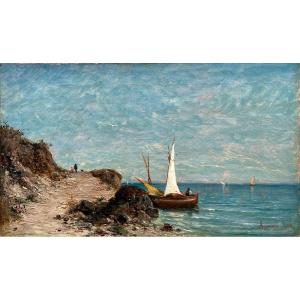
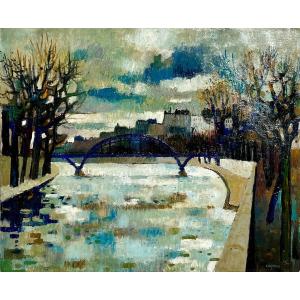

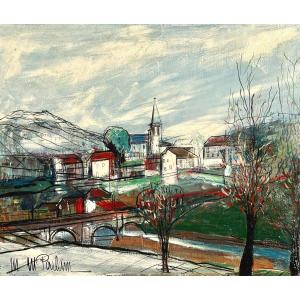
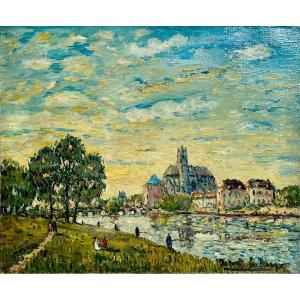


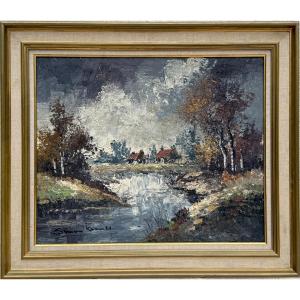
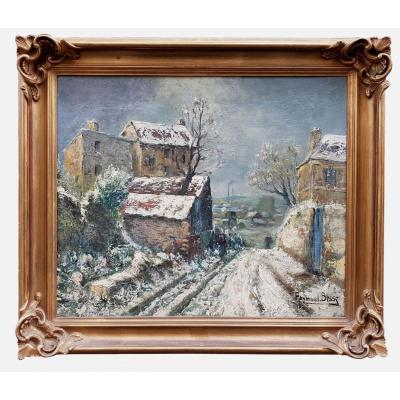
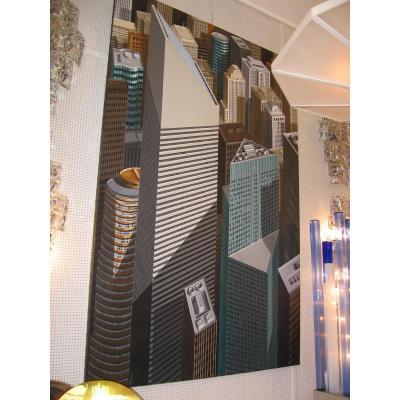
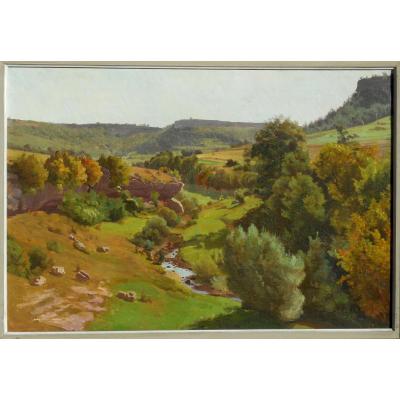
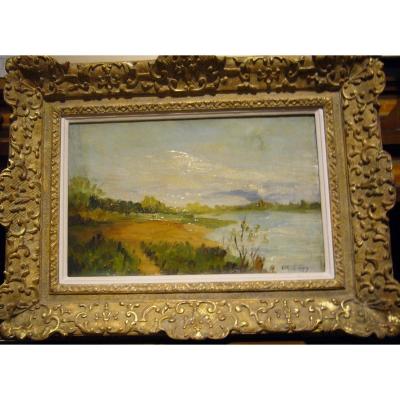



 Le Magazine de PROANTIC
Le Magazine de PROANTIC TRÉSORS Magazine
TRÉSORS Magazine Rivista Artiquariato
Rivista Artiquariato